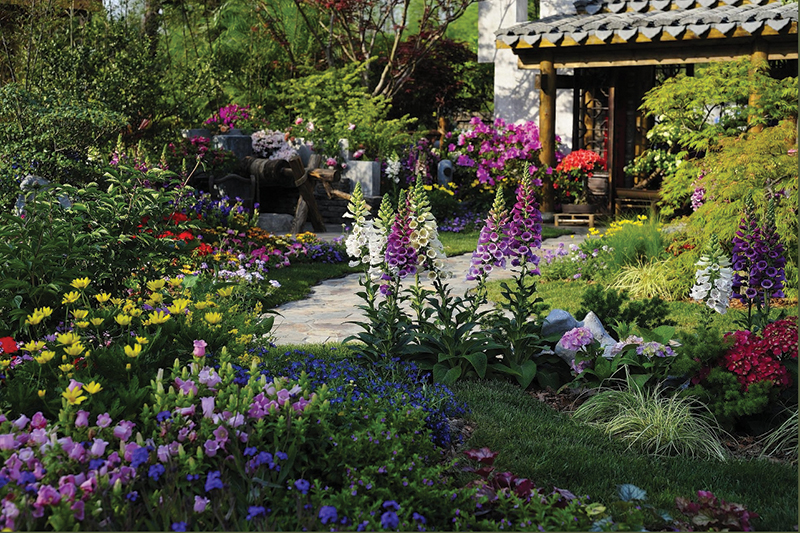If you’re thinking of landscaping your home, here are a few tips to consider. The first thing you should do is build a base map of your property showing all soft and hardscape elements. Knowledge of the elements and principles of design are essential to designing a landscape and working through the design process.
Determining the Features
The design process begins by determining the needs and desires of the end-user as well as the conditions of the site. With this information, the designer should organize the plants and hardscape materials, which are collectively referred to as the features. The features can be physically described by the visual qualities of line, form, color, texture, and visual weight—the elements of design. The principles are the fundamental concepts of composition—proportion, order, repetition, and unity—that serve as guidelines to arrange or organize the features to create an aesthetically pleasing or beautiful landscape.

The overall landscape design should be treated as an extension of the architectural style of the home. Emphasis should be on enhancing primary views and masking the undesirable ones while creating privacy with a feeling of openness. Architectural garden elements such as water features, statuary, and furnishings should also be incorporated wherever possible.
The Purpose of Plantings
The planting design should achieve an aesthetically pleasing space by using a mix of in-ground and containerized plantings to include shrubs, perennials, vines, turf, groundcover, and trees that will provide lush foliage as well as seasonal color in flowers, leaves, and fruit. Other such design considerations may include a rose garden, herb garden, cut flower garden, vegetable garden, or orchard. If local guidelines dictate water conservation efforts, the plant materials specified should have low water requirements or be drought tolerant. This design element will project the probable maintenance requirements for the landscape and the budget.

Bringing It All Together
A well-designed landscape is all about creating a sense of harmony. When all the elements come together in perfect balance, it creates a visually appealing and inviting space. The key to achieving this harmony lies in the principles of symmetry and balance. By incorporating these design principles, we can create a landscape that not only looks beautiful but also feels comfortable and harmonious. Achieving visual harmony involves careful consideration of proportion, order, repetition, and unity in the design composition. With skillful manipulation of these design elements, we can create a symphony of visual appeal that brings tranquility to any outdoor space.
The views from the windows of your home can be magically healing. For example, the window over your kitchen sink could be called a power window because so much time is spent there.
That view can be magical. From a landscape design perspective, we would want to make sure there’s a garden design that gives us a serene impression, giving us a calming result—let’s call it a Zen moment.

What could we classify as a power window? The breakfast nook, where we start our day; the dining room table, where we have family gatherings; a window opposite our desk or thinking chair where we contemplate life.
A well-designed landscape incorporates essential elements such as line, form, color, texture, and scale. These design elements work together to create a visually appealing and harmonious outdoor space. Additionally, symmetry and balance play an important role in landscape design by creating a sense of unity and order. By integrating water features and considering factors like proportion and composition, you can achieve a truly stunning landscape that enhances your home’s aesthetic appeal and brings a sense of peace, joy, and inspiration to your day.
Jim Doenges, owner of Sustainable Landscape Garden Design, has a deep passion for the details and brings decades of hands-on experience to every garden composition. He strongly believes in the principles of sustainability and in the commitment to managing each property in a way that maintains environmental integrity. Jim believes garden design is living art and treats the design as an artistic composition. He enjoys the result of seeing end users embrace all of their senses when interacting with the results of the composition.
Jim specializes in landscape design and embraces the philosophy of using “color, balance, harmony, serenity, and peace through quality horticulture.” His extensive knowledge and understanding of nature, with all its elements, allows the end-user to experience four seasons of interest with every garden. Jim believes garden design is living art and treats the design as an artistic composition. He enjoys the result of seeing end users embrace all of their senses when interacting with the results of the composition.
Contact Jim at 203.836.7640 and visit: www.sustainablelandscapegardendesign.com
to learn more.
